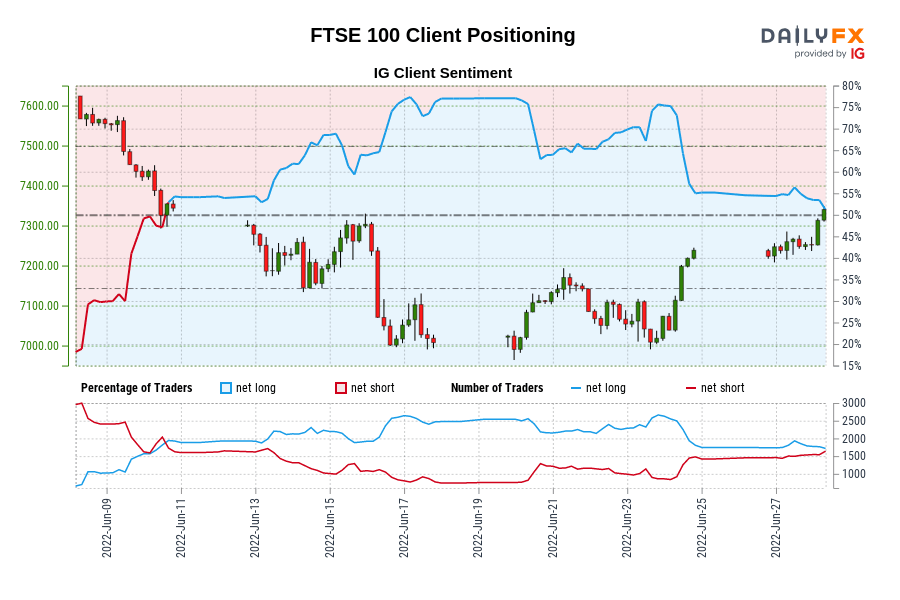Number of traders net-short has increased by 46.58% from last week. SYMBOL TRADING BIAS NET-LONG% NET-SHORT% CHANGE IN LONGS CHANGE IN SHORTS C

Number of traders net-short has increased by 46.58% from last week.
|
SYMBOL |
TRADING BIAS |
NET-LONG% |
NET-SHORT% |
CHANGE IN LONGS |
CHANGE IN SHORTS |
CHANGE IN OI |
|
FTSE 100 |
BULLISH |
49.66% |
50.34% |
-12.12%
-26.50% |
15.36%
46.58% |
-0.15%
-1.88% |
FTSE 100: Retail trader data shows 49.66% of traders are net-long with the ratio of traders short to long at 1.01 to 1. In fact, traders have remained net-short since Jun 10 when FTSE 100 traded near 7,343.70, price has moved 0.05% lower since then. The number of traders net-long is 12.12% lower than yesterday and 26.50% lower from last week, while the number of traders net-short is 15.36% higher than yesterday and 46.58% higher from last week.
We typically take a contrarian view to crowd sentiment, and the fact traders are net-short suggests FTSE 100 prices may continue to rise.
Our data shows traders are now net-short FTSE 100 for the first time since Jun 10, 2022 when FTSE 100 traded near 7,343.70. Traders are further net-short than yesterday and last week, and the combination of current sentiment and recent changes gives us a stronger FTSE 100-bullish contrarian trading bias.
element inside the
element. This is probably not what you meant to do!Load your application’s JavaScript bundle inside the element instead.
www.dailyfx.com
